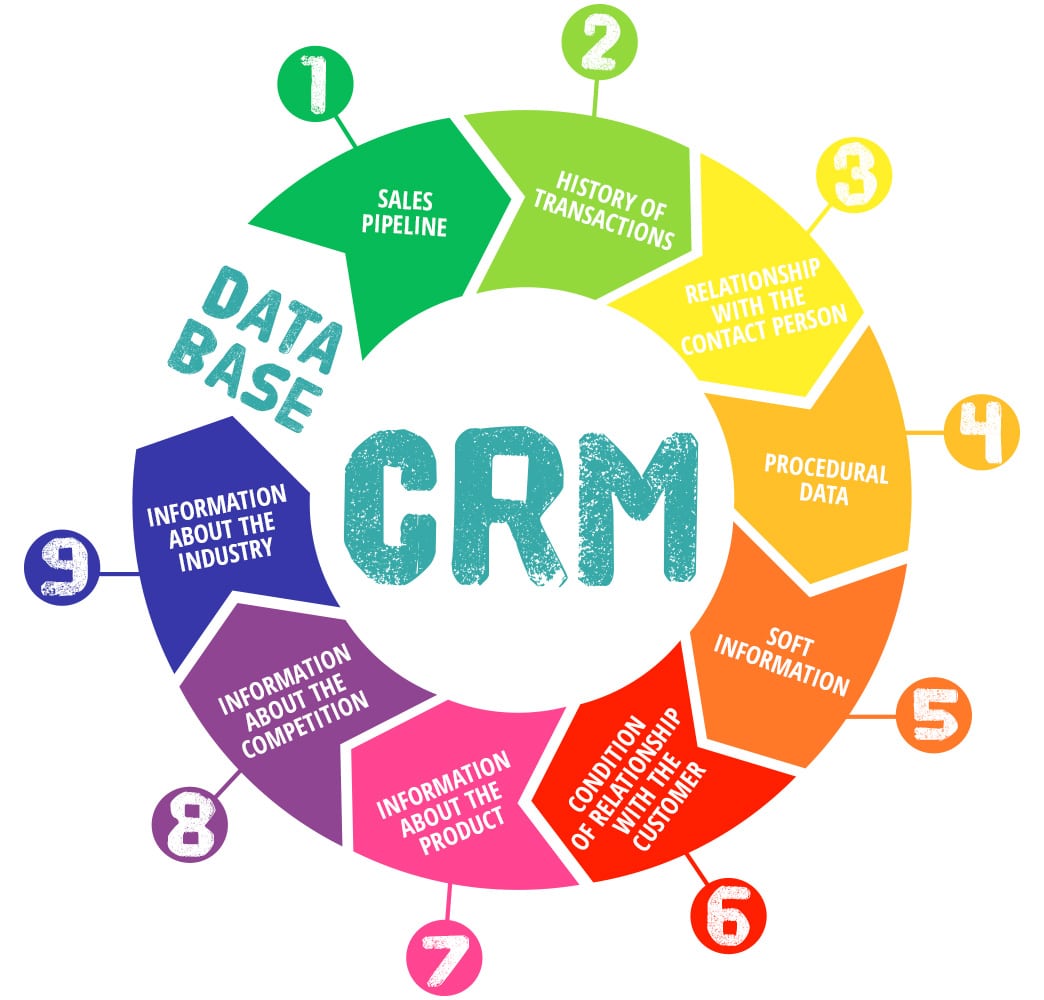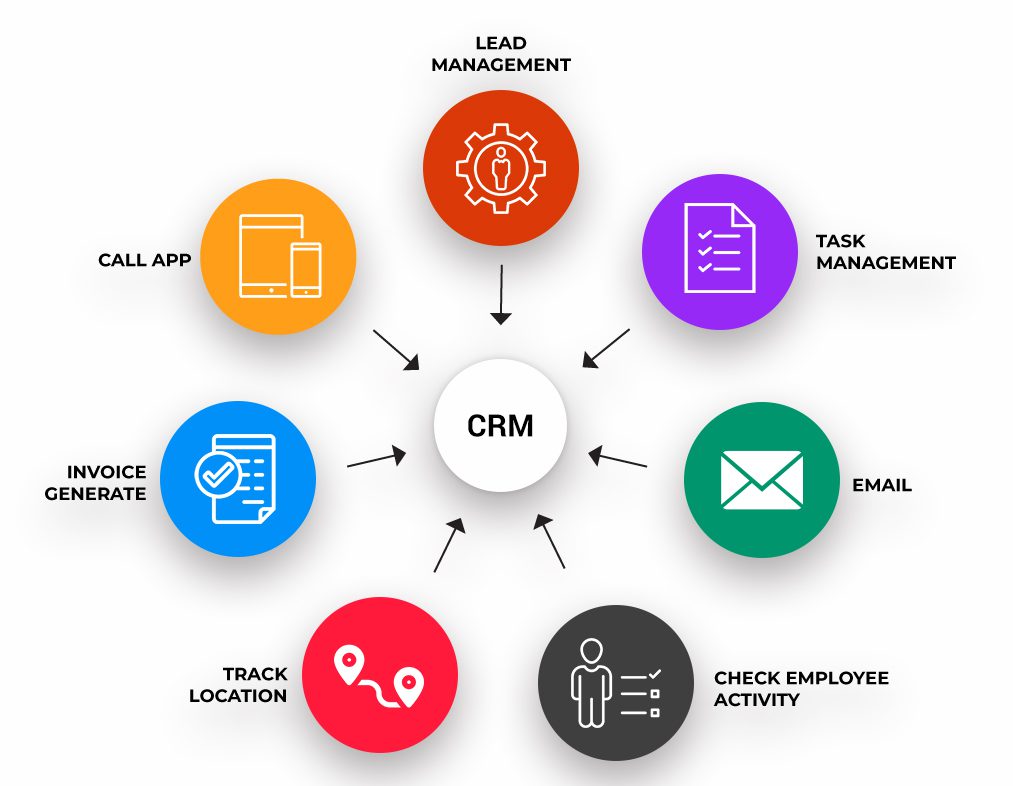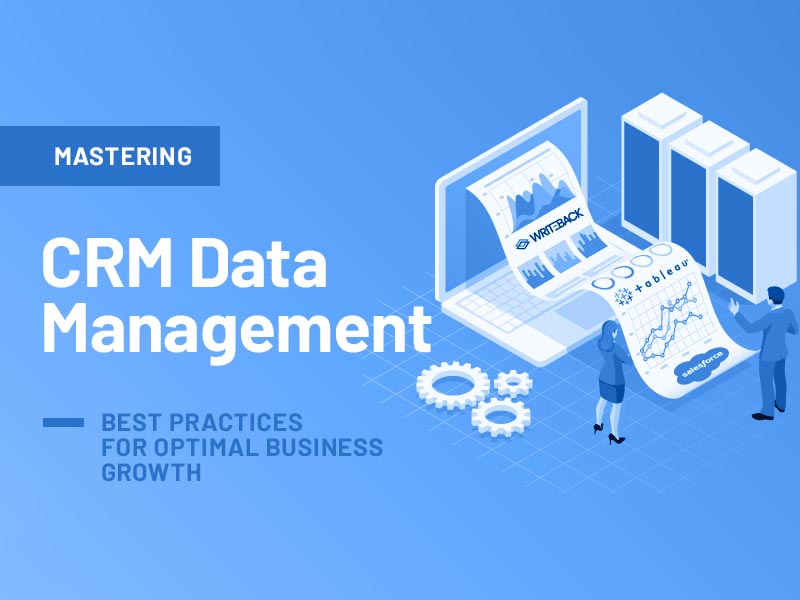crm and data management sit at the heart of any business aiming to build lasting relationships and drive growth. Navigating these systems unlocks valuable insights into customer behaviors, preferences, and needs, ultimately fostering deeper engagement and smarter business strategies.
The synergy between crm platforms and robust data management practices has evolved through technological advancements, offering businesses a smarter way to collect, analyze, and leverage customer data. With features like automation, secure integrations, data cleaning tools, and personalized engagement, modern crm solutions empower teams to streamline workflows while ensuring data accuracy and compliance.
Introduction to CRM and Data Management
Customer Relationship Management (CRM) and data management are two critical pillars that support modern business strategies. Their synergy empowers organizations to build strong customer relationships by leveraging well-organized, insightful data. Understanding the interplay between CRM and data management is essential for businesses that aim to deliver seamless customer experiences and drive growth.
CRM refers to the technologies, processes, and strategies that companies use to manage interactions with current and potential customers. Data management, on the other hand, encompasses the collection, storage, organization, and maintenance of data to ensure its accuracy, availability, and security. Historically, CRM systems evolved from simple contact databases in the 1980s to robust, cloud-based platforms that now incorporate advanced analytics, automation, and artificial intelligence.
The Relationship Between CRM and Data Management in Business
In the business context, CRM systems rely heavily on comprehensive data management to function effectively. Accurate and unified data allows organizations to personalize communication, streamline sales processes, and provide targeted support. The integration of strong data management practices into CRM platforms ensures that customer data is not just stored, but also analyzed and utilized to generate actionable insights.
The main objectives of CRM systems in handling customer data include:
- Centralizing customer information for accessibility and organization
- Enabling targeted marketing and personalized outreach
- Supporting sales forecasting and pipeline management
- Facilitating responsive and informed customer support
- Powering business intelligence and strategic planning
Core Features of Modern CRM Platforms
Today’s CRM platforms are designed with a suite of data management capabilities that go beyond basic contact storage. These features empower businesses to capture, organize, and analyze customer data at every touchpoint, ensuring data-driven operations and customer-centric strategies.
The following table Artikels the core data management features typically found in modern CRM solutions:
| Feature | Description | Impact on Data Management |
|---|---|---|
| Contact Storage | Centralized repository for customer and prospect information | Ensures quick retrieval and data consistency across teams |
| Lead Tracking | Monitoring and managing of sales leads throughout the pipeline | Improves conversion rates through timely follow-ups |
| Segmentation | Grouping contacts based on behavior, demographics, or engagement | Enables targeted marketing and personalized communication |
| Data Analytics | Tools for analyzing trends, customer behavior, and sales performance | Supports data-driven decision making and forecasting |
Enhancement of Data Handling and Accuracy Through Automation
Automation has become a transformative feature in CRM platforms, streamlining repetitive tasks and minimizing human error. Automated workflows handle data entry, lead assignment, follow-up reminders, and data updates, ensuring timely and accurate information across all customer touchpoints. By reducing manual intervention, automation not only boosts efficiency but also protects data integrity throughout the customer lifecycle.
Data Collection and Integration Techniques

Capturing relevant customer data is a foundational aspect of any effective CRM strategy. Modern CRM systems support a wide range of data collection methods, enabling organizations to build rich, actionable customer profiles.
Popular data collection methods in CRM include:
- Web forms embedded on websites or landing pages
- Social media integrations capturing engagement and feedback
- Mobile app interactions and in-app behavior tracking
- Survey responses and feedback forms
- Transactional data from ecommerce platforms
Integration Approaches for Importing External Data into CRM, Crm and data management
Integrating external data sources into CRM platforms enhances the richness of customer information and supports a 360-degree customer view. Common integration approaches include:
- Using Application Programming Interfaces (APIs) to connect with external databases or tools
- CSV or Excel file imports for bulk data transfer
- Third-party app connectors and middleware platforms
- Automatic synchronization with marketing, sales, or support software
Best Practices for Unifying Fragmented Data within CRM Environments
Unifying fragmented customer data is crucial for accurate analysis and effective engagement. Organizations should implement the following practices:
- Establishing standardized data entry protocols across teams
- Regularly merging duplicate records and consolidating customer profiles
- Utilizing unique identifiers (such as email or customer ID)
- Implementing data mapping strategies during imports and integrations
Data Quality and Cleaning Practices in CRM

Maintaining high data quality within CRM systems is vital for ensuring that business insights and customer interactions are both accurate and meaningful. Poor data quality can lead to misguided decisions, wasted resources, and diminished customer trust.
Strategies for Data Accuracy, Consistency, and Completeness
To safeguard CRM data quality, organizations must adopt clear policies and utilize appropriate tools for continuous monitoring and improvement. These strategies include:
- Enforcing mandatory fields for critical data points during entry
- Validating data formats (e.g., email addresses, phone numbers) at the input stage
- Implementing regular audits to identify inaccuracies and inconsistencies
- Automating alerts for missing or outdated information
Regular Data Cleaning, Deduplication, and Validation Procedures
Ongoing maintenance is essential for keeping CRM data reliable. Common procedures include:
- Scheduled data deduplication to remove redundant records
- Cross-checking records for completeness and correctness
- Automating validation rules to flag anomalies
- Periodic reviews and updates of inactive or obsolete contacts
- Backing up data prior to major cleaning operations
Impact of Poor Data Quality on CRM Outcomes
Poor data quality compromises the effectiveness of CRM initiatives by reducing segmentation accuracy, undermining personalization efforts, and skewing analytics. Inaccurate data can result in lost sales opportunities, ineffective marketing campaigns, and negative customer experiences.
“Reliable CRM data forms the backbone of customer-centric strategies and accurate business insights.”
Security, Compliance, and Privacy in Data Management
Ensuring the security, compliance, and privacy of customer data within CRM systems is a top priority for businesses. Failing to adhere to regulations or protect sensitive information can result in legal penalties and loss of customer trust.
Key Considerations for Securing Customer Data
CRM software must incorporate robust measures to protect data from breaches and unauthorized access. This includes end-to-end encryption, secure authentication methods, and regular security audits. Role-based access controls are essential, ensuring that only authorized personnel can view or modify sensitive customer information.
Common Regulations and Their Effects on CRM Data Practices
Compliance with global and regional data privacy laws shapes how organizations manage CRM data. The following table summarizes key regulations and their implications:
| Regulation | Region | Effect on CRM Practices |
|---|---|---|
| GDPR | European Union | Requires explicit consent for data collection, data minimization, and the right to be forgotten |
| CCPA | California, USA | Grants consumers rights to know, access, and delete their personal data; opt-out of data selling |
| PIPEDA | Canada | Mandates consent, access, and correction rights for data subjects |
| PDPA | Singapore | Requires consent for collection, use, and disclosure of personal data |
Privacy Measures and User-Access Controls in CRM Environments
To safeguard privacy, CRM environments deploy privacy-by-design frameworks, encrypted communication channels, and granular user-access controls. Audit trails and activity logs further enhance accountability, enabling organizations to track data usage and respond quickly to potential breaches.
Data-Driven Decision Making with CRM: Crm And Data Management
The ability to transform raw customer data into actionable business intelligence is a key advantage of modern CRM systems. By leveraging built-in analytics and visualization tools, organizations can identify opportunities, optimize processes, and deliver superior customer value.
Process of Analyzing Customer Data for Business Intelligence
CRM platforms aggregate data from multiple channels and process it using advanced analytics. This enables businesses to uncover trends, segment audiences, and predict customer behaviors. The process generally follows these steps:
- Data consolidation from all customer touchpoints
- Segmentation and profiling based on behavior and demographics
- Analysis of engagement, conversion, and retention metrics
- Visualization of insights for strategic planning
Examples of Enhanced Decision-Making Scenarios with CRM Data Visualization
Effective data visualization clarifies complex patterns and highlights actionable insights. Here are some scenarios where CRM visualization boosts decision-making:
- Identifying top-performing sales representatives through pipeline dashboards
- Spotting trends in customer churn using historical engagement graphs
- Monitoring campaign effectiveness with real-time marketing analytics
- Optimizing support resources by analyzing ticket resolution times
Methods for Generating Reports and Dashboards for Stakeholders
CRM platforms offer customizable report builders and dashboard interfaces. These features empower different stakeholders to access relevant metrics and KPIs in real time. Scheduled report generation and automated sharing further streamline the flow of business-critical information throughout the organization.
CRM Data Migration and Integration Challenges
Transitioning customer data into a new CRM system or integrating multiple data sources can be complex, often accompanied by significant risks. Ensuring a smooth and secure migration process is vital for maintaining data integrity and continuity.
Common Challenges and Risks in Data Migration
Data migration projects often encounter difficulties such as data loss, corruption, mapping mismatches, and prolonged downtime. These challenges can disrupt business operations and compromise the accuracy of customer information.
Best Practices for Seamless Data Migration and Integration
Adhering to structured best practices greatly reduces migration and integration risks. Key recommendations include:
- Performing a comprehensive data audit before migration
- Making full data backups prior to any transfer
- Mapping data fields between legacy systems and the new CRM
- Running pilot migrations to identify potential issues
- Validating migrated data for accuracy and completeness
- Providing training for end-users post-migration
Importance of Mapping Data Fields and Ensuring Data Integrity
Accurate mapping of data fields is crucial to prevent misalignment and data loss. It forms the backbone of a successful migration strategy, ensuring that every customer data point remains accessible and correctly categorized in the new environment. Safeguarding data integrity throughout this process guarantees smooth business operations and reliable historical records.
Customization and Personalization with CRM Data
A significant strength of CRM systems is their capacity to drive tailored customer experiences based on in-depth data analysis. Customization and personalization are essential for fostering customer loyalty and satisfaction in today’s competitive landscape.
Enabling Tailored Customer Experiences with CRM Data
By leveraging CRM data, businesses can customize their product offerings, messaging, and service approaches to align with individual customer preferences and behaviors. This personalization demonstrates attentiveness and builds stronger relationships.
Examples of Personalized Marketing, Sales, and Support Interactions
CRM-driven personalization can be seen in various business functions:
- Sending targeted email campaigns with personalized content and product recommendations
- Triggering automated follow-ups based on customer activity or milestones
- Assigning dedicated account managers to high-value clients
- Providing tailored support responses using detailed customer histories
Role of Segmentation and Profiling in Customizing Engagement Strategies
Segmentation and profiling allow businesses to group customers by shared attributes or behaviors, facilitating more relevant and effective engagement strategies. Proper segmentation supports targeted offers, priority support, and dynamic content that resonates with specific customer segments.
Advancements and Trends in CRM and Data Management
The landscape of CRM and data management is rapidly evolving, driven by technological advancements and changing business needs. Emerging innovations are revolutionizing how organizations collect, analyze, and act on customer data.
Innovations Transforming CRM Data Management
Artificial intelligence (AI), machine learning, and process automation are at the forefront of CRM evolution. These technologies enhance predictive analytics, automate routine tasks, and surface actionable insights that were previously difficult to uncover.
Emerging Technologies and Their Applications Within CRM Platforms
The following table highlights several key technologies and their impact on CRM platforms:
| Technology | Application in CRM | Example |
|---|---|---|
| Artificial Intelligence | Predictive lead scoring, chatbots, personalized recommendations | AI-powered sales forecasting in Salesforce Einstein |
| Machine Learning | Customer behavior analysis, churn prediction | Churn risk analysis in HubSpot CRM |
| Robotic Process Automation | Automated data entry and synchronization | Automated workflow triggers in Zoho CRM |
| Real-Time Analytics | Instant KPI dashboards, live performance tracking | Dynamic dashboards in Microsoft Dynamics 365 |
Future Trends Shaping CRM and Data Management Integration
Going forward, CRM solutions are expected to become more integrated, intelligent, and customer-centric. Trends such as hyper-personalization, omnichannel engagement, and privacy-first data architectures are gaining traction. For example, AI-driven personalization in retail CRM platforms is enabling brands to offer unique shopping experiences in real time, while stricter privacy regulations are prompting companies to adopt more transparent data practices.
Illustrations and Visual Representations

Visual representations are powerful tools for understanding the complexity and value of CRM data processes. Detailed diagrams and dashboards enhance comprehension and support data-driven decision making.
Descriptive Visualizations of CRM Data Flow and Integration Points
Imagine an intricate flowchart mapping the journey of a customer’s data through various business systems: starting from a website form submission, moving into the CRM database, and branching out to marketing automation, sales, and support modules. Key integration points are clearly marked, showcasing real-time data sync between CRM and external tools such as email platforms and ecommerce systems. Data validation and enrichment stages are highlighted to illustrate how information is refined at each step.
Conceptual Image of a CRM Dashboard Demonstrating Real-Time Analytics and KPIs
A conceptual CRM dashboard is packed with interactive charts and widgets: a live sales funnel diagram displaying conversion rates at each stage, a heatmap showing customer engagement by region, and a set of dials monitoring key performance indicators like average response time, net promoter score, and revenue growth. The dashboard allows users to filter data by team, product, or campaign, providing instant insights for strategic planning.
“Visual tools transform raw CRM data into stories that reveal opportunities, highlight challenges, and empower organizations to act with clarity and confidence.”
Summary
Mastering crm and data management is more than implementing technology; it’s about creating a seamless, data-driven culture that adapts to customer expectations and market trends. By staying ahead of advancements and continually refining data practices, businesses can unlock new opportunities, make smarter decisions, and deliver exceptional customer experiences.
Essential Questionnaire
What is the primary benefit of integrating crm with data management systems?
The main benefit is unified, accurate customer data that allows for better customer insights, more effective marketing, and streamlined operations.
Can small businesses effectively use crm and data management tools?
Yes, there are scalable crm solutions tailored for small businesses, offering simple interfaces and essential features that grow with the business.
How often should crm data be cleaned and validated?
Data cleaning and validation should be performed regularly—typically quarterly or even monthly—depending on data volume and business needs.
Are crm platforms compatible with other business software?
Most modern crm platforms support integration with common business tools such as email, marketing automation, and accounting software to ensure seamless workflows.
What security measures are important for crm data?
Key measures include user access controls, encryption, regular audits, and compliance with regulations like GDPR and CCPA to protect sensitive customer information.
